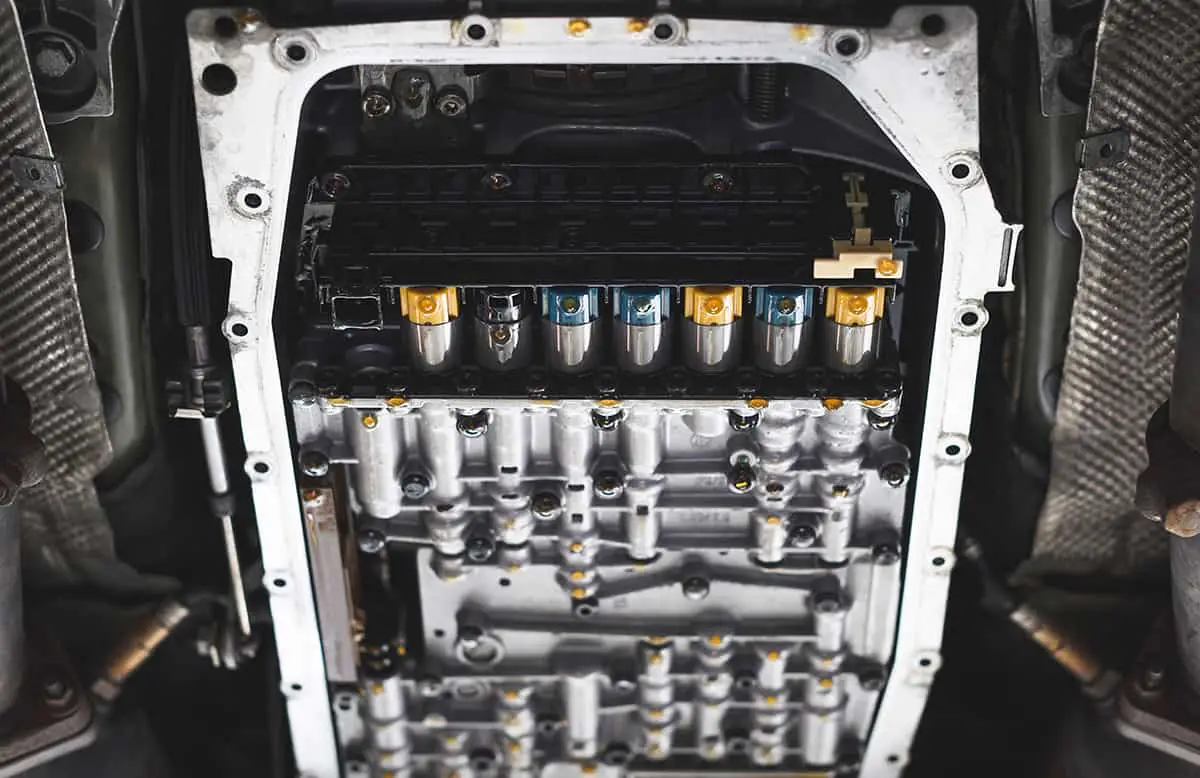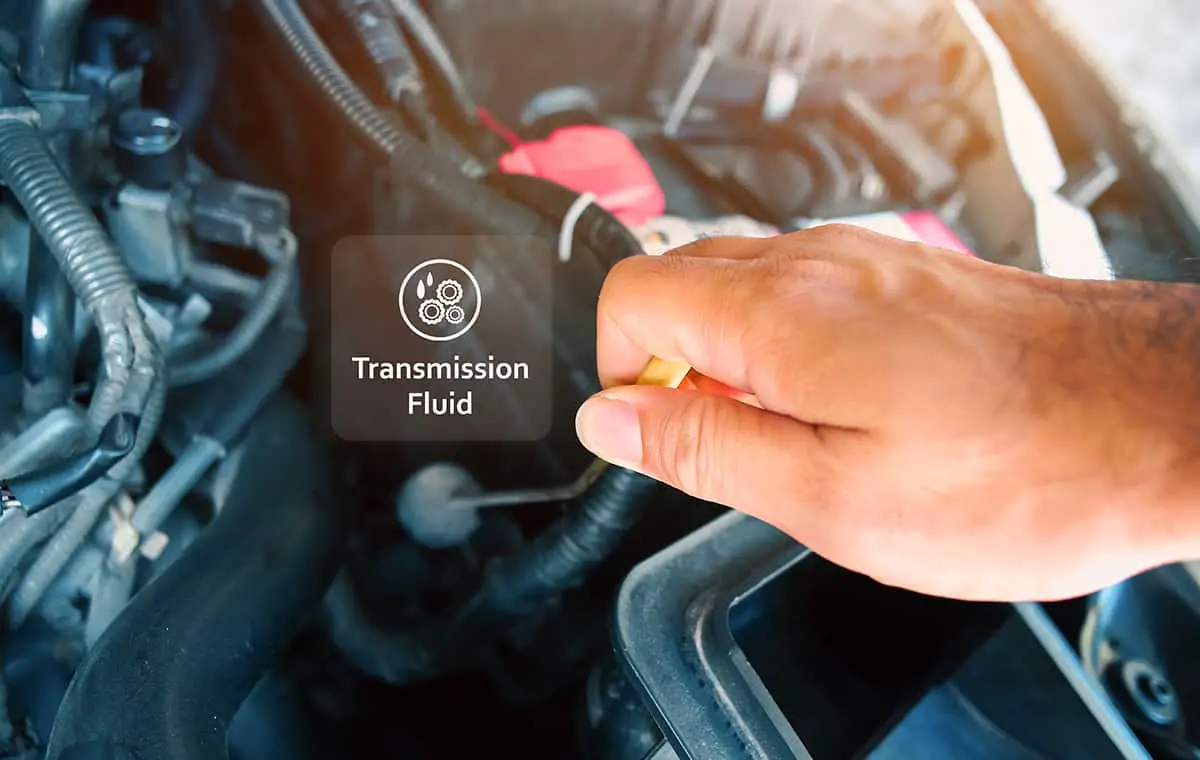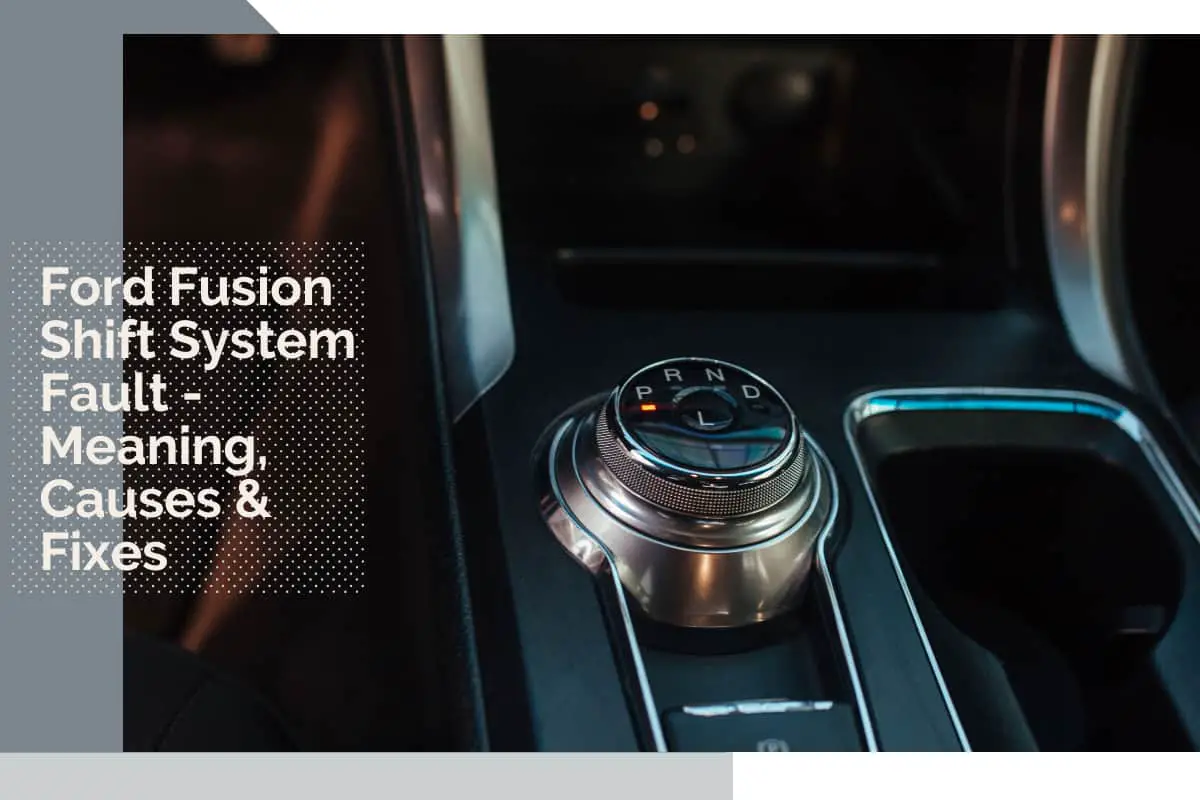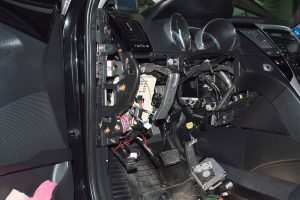The Ford Fusion is a stylish and practical mid-sized sedan that has been a popular choice for families and commuters alike. But just like any other car, it is not immune to faults, especially in its shift system. So, what does it mean, and what can cause it?
The SHIFT SYS FAULT (shift system fault) message typically refers to a problem with the automatic transmission system in your Ford Fusion. When a shift system fault occurs, it can result in symptoms such as the vehicle not shifting gears properly, slipping out of gear, or becoming stuck in a single gear. The most common causes of a SHIFT SYS FAULT include:
- Broken shift solenoid
- Snapped shift cable
- Failed transmission control module
- Low transmission fluid level
- Worn clutches
- Dirty transmission fluid
Today, we’re going to dive deeper into shift system faults, and I’ll go over each of these causes and provide a few tips on what you can do to resolve the problem.
What Is a Shift System Fault?
The shift system is an integral part of the Ford Fusion’s transmission and is in charge of modulating gear changes. It is made up of a number of different parts, such as shift solenoids, sensors, and control modules, which all work together to facilitate effortless shifting.
When your Fusion has a problem with its shift system, you’ll notice a flashing message on your dash with the words “SHIFT SYS FAULT.” This may be accompanied by difficulty in shifting between gears—e.g., from drive to park and vice versa. Slipping out of gear, getting stuck in one gear, not shifting at all, or shifting gears erratically are also possible symptoms of a shift system fault.
Symptoms of Shift System Fault
You should notice the following symptoms associated with shift system errors:
- Slipping out of gear— While driving, the car may slip out of gear, causing the engine to rev rapidly but not gain speed.
- Stuck in a single gear— The car may get stuck in one gear, making it impossible to speed up or maintain a constant velocity.
- Delayed or harsh gear changes— The car’s shift times are longer than usual, or the shifts are more jarring than usual.
- No response when shifting gears—The car won’t move when you try to shift gears, or the transmission won’t engage the gear you want.
- Engine revving without acceleration— An issue with the shift system could cause the engine to rev without gaining speed.
- Warning lights or codes— There could be a problem with the vehicle’s computer system, which would manifest as the illumination of the Check Engine or Transmission Warning lights or the storage of a diagnostic trouble code.
Shift System Fault Messages
If any of these messages appear on your dash, then you’ll know that there’s a problem with the shift system. Shop Talk has a comprehensive video guide that describes these messages in greater detail.
- SHIFT SYS FAULT Service Required—This is a general message that shows that the shift system is compromised.
- SHIFT SYSFAULT Reverse Unavailable—This message indicates that the reverse gear is inoperable.
- SHIFT SYS FAULT Cannot Shift Trans—This is due to a system malfunction. Before leaving your car, activate the hand brake or parking brake.
- SHIFT SYS FAULT Confirm Park Brake—This is identical to the previous message, in which the driver must activate the hand or parking brake before exiting the vehicle.
- SHIFT SYS FAULT Vehicle Is Shifting to Park—This message will appear when your Focus cannot exit the park gear.
Ford Fusion Shift System Fault—Causes & Fixes
1. Broken shift solenoid

A vehicle’s automatic transmission relies on the shift solenoid to regulate the flow of transmission fluid. In order for the transmission to change gears, it opens and closes to channel fluid to the appropriate clutch or band.
When the transmission is unable to shift gears as it should due to a faulty shift solenoid, a shift system fault will be displayed. If the shift solenoid isn’t doing its job, the clutches and bands might not get the right amount of fluid. As a result, the transmission may slip out of gear, get stuck in one gear, or shift gears erratically.
Fix—Replace the solenoid
It takes some mechanical knowledge and specialized equipment to change the shift solenoid in a Ford Fusion. While it’s possible to replace the solenoid on your own (TRQ has a handy video guide that demonstrates this), your car deserves to be taken care of by trained professionals.
2. Snapped shift cable
A vehicle’s transmission system isn’t complete without the shift cable, which links the shifter to the gearbox. It relays the gear change command from the driver to the transmission so that the vehicle can move between gears.
A shift system fault may appear if the transmission is unable to move into the selected gear due to a broken shift cable. When the cable breaks, the shifter is no longer connected to the transmission. This prevents the transmission from receiving the driver’s intended signal. Because of this, the car may get stuck in one gear, refuse to shift, or shift gears erratically.
Fix: Replace the shift cable
Similar to replacing the solenoid, replacing a snapped shift cable can be tricky work. Tricky Wily (fitting name, by the way) can help you with this in their video guide below, or you can get your Fusion inspected by a professional mechanic.
3. Failed transmission control module

The transmission control module (TCM) is an onboard computer in modern automobiles that manages the gearbox. By taking readings from various sensors, it can determine when it’s optimal to shift gears and then signal the shift solenoids to engage the necessary clutch or band.
When the transmission is unable to shift gears correctly, a shift system fault will be displayed. If the TCM fails, it may no longer receive valid sensor input or send valid shift solenoid control signals. As a result, the transmission may slip out of gear, get stuck in one gear, or shift gears erratically.
4. Low transmission fluid level
Cars with automatic transmissions require a special lubricant called transmission fluid. As a hydraulic fluid, it regulates gear changes and aids in keeping the transmission running smoothly by lowering friction and wear.
A shift system fault may show up if the transmission is unable to shift gears due to a lack of transmission fluid. Due to insufficient lubrication, internal transmission components may experience increased friction and wear when the fluid level is low. If the transmission loses too much fluid, the shifting mechanism can malfunction.
Solution: Top off the transmission fluid
Here’s a problem you can fix on your own. Just get a bottle of transmission fluid for your Fusion and follow these steps:
- Check the transmission fluid level with the dipsticks. It is typically located near the transmission and can be easily accessed from under the hood.
- Remove the dipstick and wipe it clean with a lint-free cloth.
- Reinsert the dipstick, remove it again, and check the fluid level. The fluid level should be between the “full” and “add” marks on the dipstick.
- Open the transmission fluid bottle and make sure that the correct type of fluid is being used.
- Slowly add the fluid through the dipstick tube, taking care not to overfill the transmission.
- After adding the fluid, wait a few minutes and then check the fluid level again with the dipstick.
- If the fluid level is still low, repeat steps 4 and 5 until the proper level is reached.
5. Dirty transmission fluid
Transmissions can lose their ability to shift gears if the fluid in them becomes contaminated with dirt, debris, and metal particles over time. Increased friction and wear between the transmission’s internal components can be a result of dirty fluid. If the transmission loses too much fluid, the shifting mechanism can malfunction.
Fix: Drain and replace transmission fluid
Draining and replacing the transmission fluid takes a bit more time, but if you have the tools, you can DIY it.
- Locate the transmission fluid pan. It is located under the vehicle and can be accessed from underneath.
- Using a drain pan, drain the fluid from the transmission fluid pan.
- Using a socket wrench, remove the bolts that hold the transmission fluid pan in place and carefully remove the pan.
- Clean the transmission fluid pan, making sure to remove any debris or contaminants.
- If the vehicle has a transmission filter, install a new one.
- Reinstall the transmission fluid pan and tighten the bolts using a socket wrench.
- Fill the transmission with the recommended type of transmission fluid.
- Check the fluid level using the dipstick and add more fluid as necessary.
6. Worn clutches
To allow the automatic transmission to shift gears, vehicles have clutches that can be engaged and disengaged. To keep the gears from grinding against each other, they allow the engine to keep running during gear changes in the transmission.
Damaged clutches can prevent the transmission from shifting gears smoothly, leading to the manifestation of a shift system fault. Worn clutches can make it, so the transmission slips out of gear, gets stuck in one gear, or shifts gears in an unpredictable way.
Fix: Replace the clutch
Unfortunately, this is something that only a trained professional can do. Unless you have the patience to sit through and follow Kevin-Albert William’s 42-minute video guide, I suggest having a mechanic fix your Fusion’s clutch.






